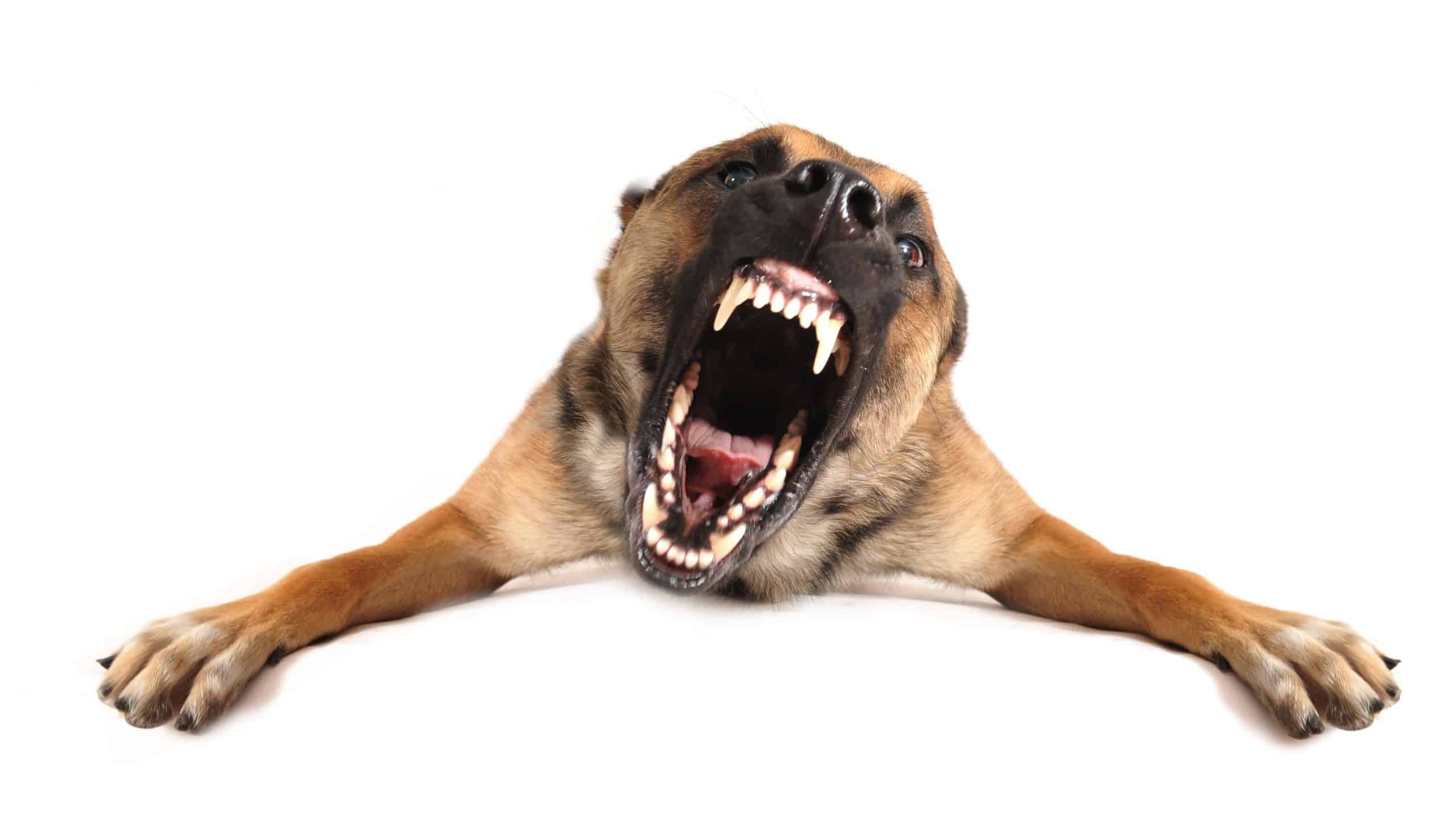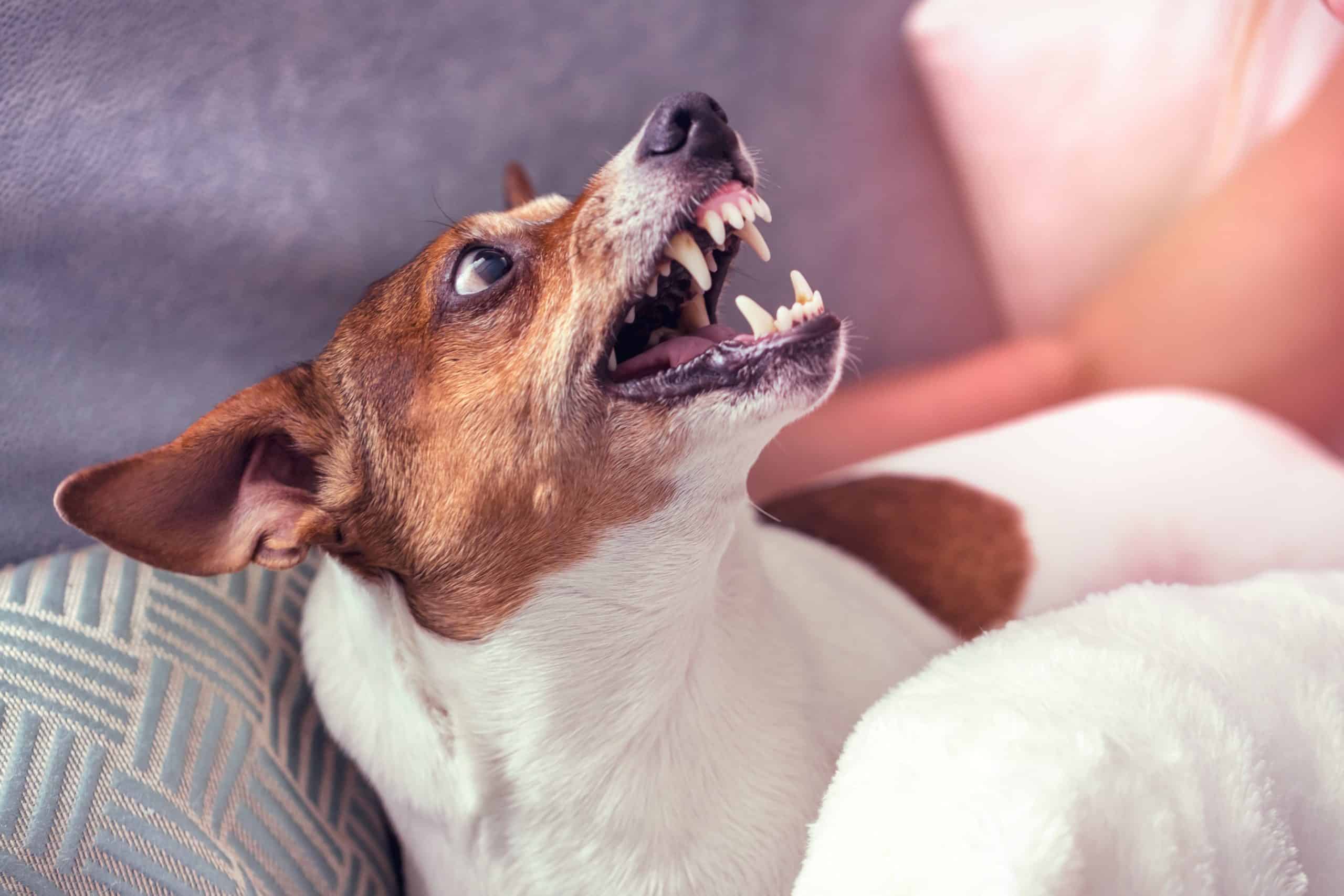
Getting a dog can be a wonderful addition to the family or home. Dogs are some of the most loyal pets you can have. However, some situations or lifestyles may cause dogs to become aggressive, and then it’s crucial to know how to calm an aggressive dog.
Dog aggression is not always the owner’s fault. Excessive growling, snapping, and biting signify a serious behavioral problem. It can be difficult to deal with an aggressive dog, but that’s why we’re here.
Want to know how to calm an aggressive dog? This article covers the necessary steps to take when dealing with aggressive dog behavior.
Read on to discover how to calm an aggressive dog.
1. Assess the situation

The first step to fixing an aggressive dog’s behavior is assessing the situation. Aggression is often defined by baring teeth, lunging, biting, or snarling. However, aggression can take a variety of forms.
Here are the different types of aggression your dog may show.
Territorial aggression
A dog will become aggressive when you invade their space. They may also show signs of aggression if a stranger comes into your home. Even if it’s a friend or a family member, your dog will deem them an intruder.
Protective aggression
Dogs are social animals, displaying loyalty to their pack. An aggressive dog may try to protect you, their pack, from another person or animal. A new mother may also become aggressive or hostile around their puppies and those who go near them.
Possessive aggression
A dog may guard its resources and become possessive. This may happen with their food, bones, chew toys, or any other object they hold value to.
Fear and defensive aggression
A scared dog may become aggressive to try to ward off an attacker. A dog may either growl or bite when cornered, injured, or in defense of itself. Your dog will often indicate that they want to be alone by turning their head away before biting.
Social aggression
A dog with social aggression may not interact well with other dogs. This often happens when you haven’t socialized your dog with other dogs or people.
Frustration aggression
This behavior is often seen in dogs restricted by a leash or a fence. Your dog may show signs of frustration-aggression if you don’t train or give them enough attention. They become excited and may act when they cannot act on it.
Predatory aggression
A dog that acts out without warning may be acting on its predatory instincts. This can be detrimental if your child wants to play chase or tag with the dog.
2. Identify the triggers
Now that you know the different types of aggression, it’s time to identify the triggers. Knowing the underlying cause of your dog’s aggression will help you form a proper plan.
However, it’s crucial to remember that avoiding triggers is not a permanent solution. It will only serve as your foundation to getting the proper treatment. If your dog becomes aggressive to visitors, keep the dog in another room for the time being.
3. Don’t treat aggression with aggression
It’s essential to stay calm when your dog starts becoming aggressive. If they start growling over a toy, or at a child or another dog, be calm. Your first instinct may be to punish or tell them off, but this can be counterproductive.
Loud scolding can increase tensions, and your dog may start to defend themselves. Your dog may even recognize your reaction as fear and try to protect you from the threat. If you’re out on a walk, direct your dog to another path or walk around the person.
If your dog is aggressive towards you, try removing social pressure. Follow canine gestures, like turning your head and lowering your gaze. This tells your dog that you’re not a threat.
4. Train your dog

Dogs that become aggressive out of frustration is often due to bad pet ownership. It’s crucial to consider your lifestyle before getting a dog. If you’re too busy to take care of your dog, they may start acting out.
If your dog is manifesting frustrated aggression, reconsider your lifestyle. Take some time out of the day to spend more time with your dog. Train them or take them out for a walk to allow them to get their energy out.
This is also a great opportunity to resolve other pet behavior problems.
5. Change your dog’s environment
Changing your dog’s environment can help you lower signs of aggression. Ensure to make small environmental changes.
Too big of a change can overstimulate your dog. Change your dog’s diet or give them other toys.
When taking your dog on walks, take different routes and avoid other aggressive dogs. Introduce them to other dogs or people at a gradual pace.
6. See your veterinarian
If you’re not sure what’s causing your dog’s aggression, contact your veterinarian. Sometimes, a medical condition may be what’s leading your dog to aggression. Your dog may become aggressive due to conclusion, lethargy, or increased weight.
Your veterinarian will help you diagnose these medical conditions. After that, they may prescribe you medication to help treat aggression. Your veterinarian may suggest the following options:
- Fluoxetine
- Buspirone
- Sertraline
- Amitripty
- Clomipramine
- Propranolol
It’s crucial to remember that medication is not a quick-fix. However, it can help training and modification techniques become more effective. These medications can give your dogs more self-control and make them less impulsive.
7. Hire a professional trainer
If your dog is showing excessive aggression, it’s best to seek a professional trainer. It’s never good to assume that your dog will grow out of this behavior in time. It’s a liability that can end up in a potential disaster.
Trainers know the best way to treat an aggressive dog. If you feel that your dog is too much for you, consider seeing a professional trainer.
7 tips to calm an aggressive dog
Now you know how to calm an aggressive dog. Dogs can be loveable companions at most times, but dealing with aggression can be a daunting task. Use these tips and start making a better life for you and your pet.
